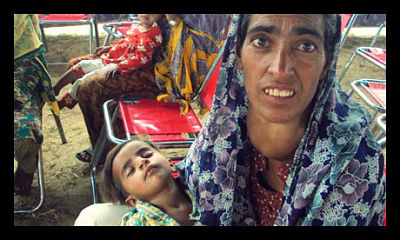Understanding Hidden Hunger

Sight and Life, a prominent group working to fight micronutrient deficiencies prevalent among the world’s poor, has recently released its Hidden Hunger Index. Hidden hunger is defined as a chronic deficiency of necessary micronutrients. Rather than a lack of food or calories, this type of hunger results from a diet low in specific nutrients. This condition affects approximately 1 in 3 people in the world today and accounts for about 7% of diseases around the world. Although the signs are not visible, hidden hunger has long-term consequences for overall health, productivity, and mental development. The most common deficiencies are in vitamin A, iodine, folate, and B vitamins. Women of reproductive age and young children are most severely affected by this condition.
In addition to its negative and often permanent health effects, hidden hunger has numerous economic consequences. It aggravates global poverty in multiple ways and minimizes countries’ growth in economic productivity. It also increases child and maternal mortality, causes birth defects, diseases, and disabilities. Unfortunately, it also restrains the empowerment of women by adversely affecting their health.
The Hidden Hunger Index concluded that hidden hunger in pre-school age children was alarmingly high in sub-Saharan Africa, India, and Afghanistan. High Hidden Hunger Index was found to correlate with low Human Development Index, a measure based on three basic qualities of human well-being: a long and healthy life, education, and standard of living. While many micronutrient deficiencies were found to occur in groups, iodine deficiencies were often found independently. This is probably due to differing country laws on salt iodization. Iodine deficiency accounts for approximately 18 million children born mentally impaired each year.
Hidden hunger and its related health issues are significant obstacles to achieving the Millennium Development Goals (MDGs) laid out by the United Nations. The Hidden Hunger Index shines a light on micronutrient deficiencies and acts as a tool for activism. While there is information concerning hunger issues with root causes in a lack of food and calories, and about single micronutrient deficiencies, information about multiple micronutrient deficiencies is sorely lacking. Sight and Life developed the Hidden Hunger Index in the hopes that it will “serve as a tool to stimulate global efforts towards scaling up nutrition interventions”.
– Katie Fullerton
Sources: Micronutrient Initiative, Hidden Hunger Index
Photo: The Guardian
